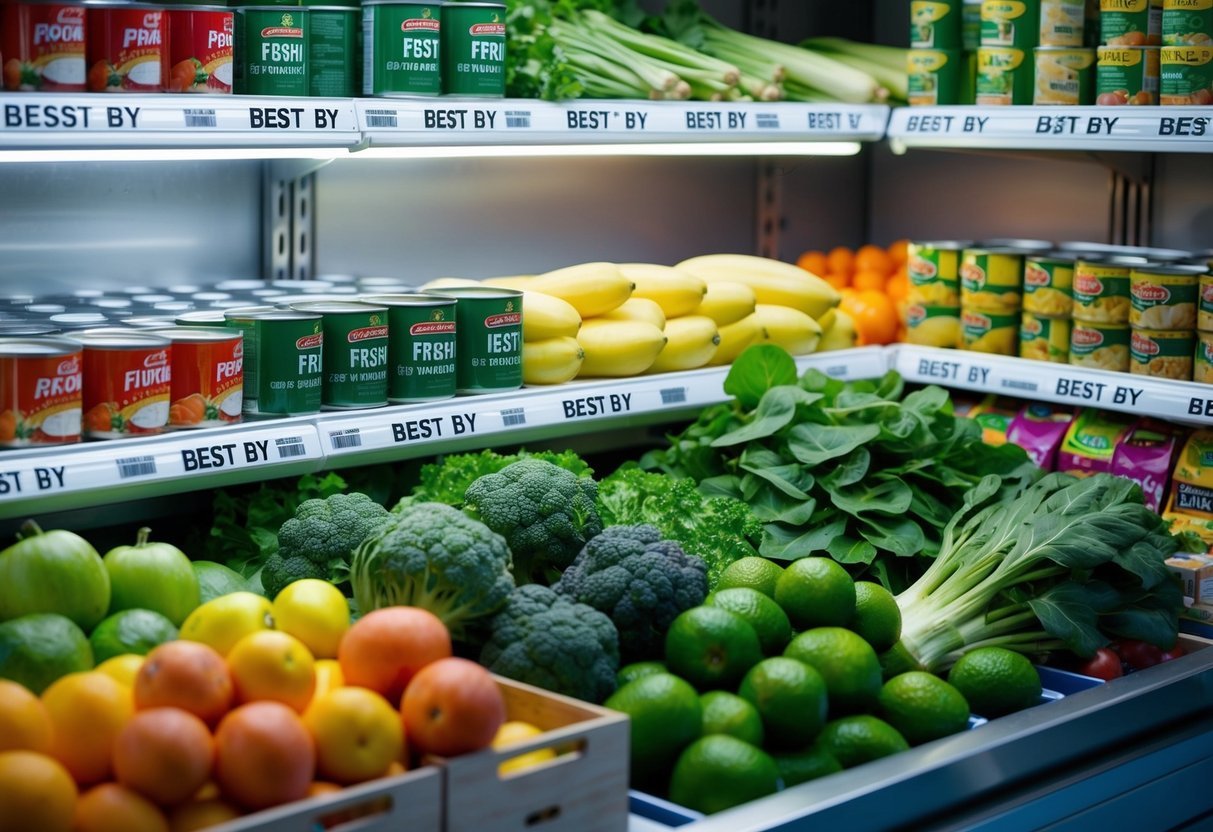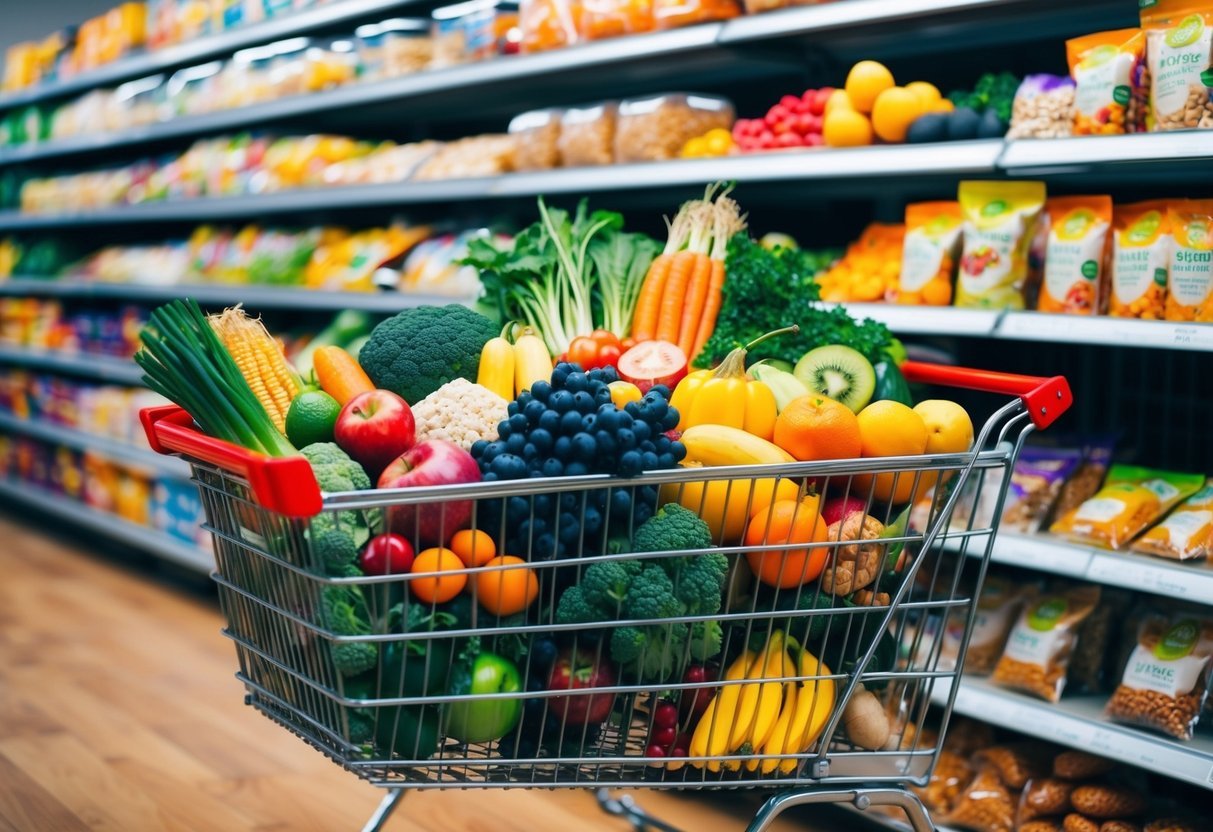Planning Your Supermarket Strategy
Having a solid plan before you go grocery shopping can make a big difference.
A well-thought-out strategy helps you make healthier choices and stick to your dietary goals.
Creating a Balanced Shopping List
Start by creating a balanced shopping list that includes a variety of foods.
Focus on nutrient-dense foods such as fruits, vegetables, whole grains, lean proteins, and healthy fats.
This type of planning ensures you get the vitamins and minerals your body needs.
Consider categorizing your list into sections like produce, dairy, and proteins.
This organization saves time and reduces impulse buys.
Aim to fill your cart with mostly whole foods.
These have fewer additives and preservatives compared to processed items.
Before heading to the store, check your pantry and fridge.
Remove expired items and identify what you need.
A shopping list can prevent overspending and help you avoid unhealthy snacks.
Understanding Food Labels and Nutrient Density
Food labels are your allies in making informed choices.
Look for key information such as calories, serving sizes, and nutrient content.
Pay attention to nutrient density, which refers to the amount of essential nutrients in a food relative to its calorie count.
Choose items that are low in added sugars and unhealthy fats.
Ideally, aim for foods high in protein, fiber, vitamins, and minerals.
For example, legumes, vegetables, and whole grains are excellent options.
When comparing products, check the ingredient list.
Shorter lists typically indicate fewer additives.
Familiarize yourself with terms like “whole grain” and “low fat” to avoid misleading labels.
This practice helps you select healthier options during your shopping trip.
Navigating the Supermarket Aisles
When you enter a supermarket, knowing how to navigate the aisles can make a big difference in your shopping experience.
Focus on selecting fresh produce, whole grains, healthy fats, proteins, and dairy alternatives.
Selecting Fresh Produce
Look for fresh fruits and vegetables first.
The produce section usually displays colorful, seasonal items that are at their peak flavor and nutrition.
Choose a variety of colors, as different fruits and vegetables contain different nutrients.
If possible, opt for local produce; it may taste better and be fresher.
When selecting fruits, look for firm skin and avoid any with bruises.
For vegetables, check for vibrant color and crispness.
Remember, seasonal produce not only tastes better but can also be more affordable.
Choosing Whole Grains and Healthy Fats
Next, head to the middle aisles to find whole grains.
Look for items like brown rice, quinoa, and whole-grain bread.
Check the labels to ensure they are 100% whole grain, as this means they retain more nutrients and fiber.
For healthy fats, consider options such as olive oil, avocados, and nuts.
These provide essential fatty acids that are beneficial for your health.
Avoid processed options that may contain unhealthy trans fats.
Incorporating these foods can support your dietary needs.
Finding Healthy Proteins and Dairy Alternatives
When it comes to proteins, explore both meat and plant-based sources.
Lean meats like chicken and fish are great choices.
If you prefer plant-based options, look for tofu, lentils, or beans.
For dairy alternatives, check out options like almond milk, soy yogurt, or oat milk.
These can provide similar nutritional benefits without the added calories or fat found in some dairy products.
Make sure to read labels to ensure you get fortified vitamins, particularly calcium and vitamin D.
Smart Shopping Techniques
When shopping at the supermarket, having a clear plan can help you make healthier choices and save money.
Focus on avoiding impulse purchases and processed foods while taking advantage of sales and bulk options.
Avoiding Impulse Buys and Processed Foods
Impulse purchases can derail your diet and budget.
To avoid these, always stick to a shopping list.
Write down what you need before you leave home and resist the urge to add items as you browse.
Look for sale items but be careful.
Sometimes, “sales” can lure you into buying snacks or processed foods that don’t align with your health goals.
Recognize that items like chips and sweetened condiments are often on sale but may not be good choices.
Another tip is to shop while full.
Hunger makes you more susceptible to making impulse buys.
Shopping at a time when you’re not rushed or preoccupied can help you stick to your list and make thoughtful choices.
Making the Most of Sales and Bulk Purchases
To maximize your savings, look for sales on healthy staples.
Fresh fruits, vegetables, grains, and lean proteins often go on sale.
Use these opportunities to stock up.
Buying in bulk can lead to significant savings.
Many stores offer discounts for bulk purchases, especially on items like rice, beans, and nuts.
Ensure you choose items with a long shelf-life or that you will use regularly.
When purchasing in bulk, consider splitting large packages with friends or family members to avoid waste.
Keep an eye on the unit price to ensure you’re truly getting a good deal.
This method not only helps you save money but also encourages healthy eating habits.
Optimizing Food Freshness and Shelf Life

Maintaining food freshness is crucial when shopping for a healthy diet.
It affects not only the taste of your meals but also their nutritional value.
Knowing how to select the right food can enhance your diet and reduce waste.
Choosing Fresh Over Frozen or Canned Options
When shopping, opt for fresh produce whenever possible.
Fresh fruits and vegetables often contain more vitamins and minerals than their frozen or canned counterparts.
They also lack added sugars, salts, or preservatives that can be present in other forms.
Inspect the produce for freshness by checking for vibrant colors and firmness.
If you’re unsure, choosing seasonal items ensures better quality.
Frozen fruits and vegetables can be a good alternative when fresh options are not available.
They are usually frozen at peak ripeness, preserving nutrients well.
Choose organic frozen products without added ingredients for a healthier option.
Canned produce often loses some nutritional value during processing.
If you must select canned options, look for those packed in water or natural juices without added sugars or salt.
Always read labels to make informed choices that benefit your health.
Assembling Balanced Meals and Snacks

Creating balanced meals and snacks is vital for a healthy diet.
Focus on incorporating a mix of food groups and choosing nutritious options that will keep you satisfied without excess calories.
Incorporating Variety and Moderation
To assemble balanced meals, start with a base of lean protein.
Options like eggs, seafood, and lentils provide essential nutrients.
Aim for a colorful plate by adding vegetables rich in antioxidants.
Good examples include spinach, bell peppers, and berries.
When it comes to snacks, think about keeping portions in check.
Instead of reaching for chips or sweets, consider healthier choices like carrot sticks with hummus, or a small serving of mixed nuts.
Incorporate whole grains, such as brown rice or quinoa, to boost fiber.
This can help you feel fuller longer.
Moderation is key, so choose smaller portions of higher-calorie items to maintain your goals.

